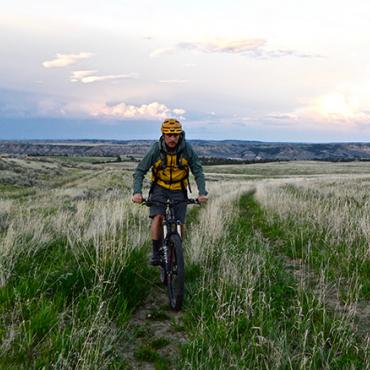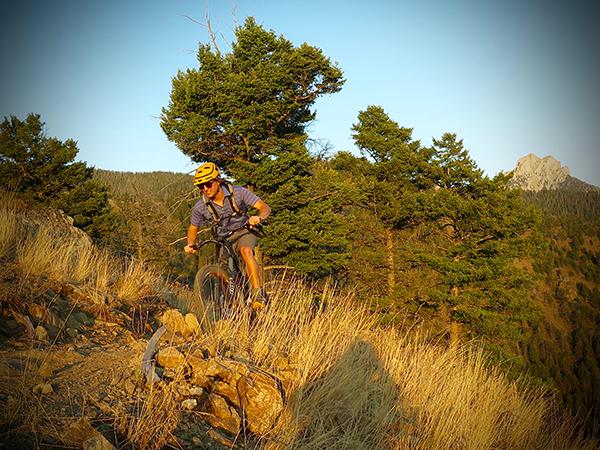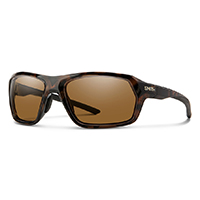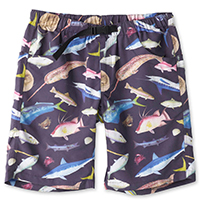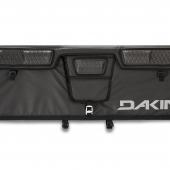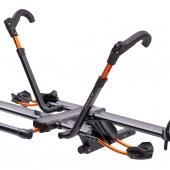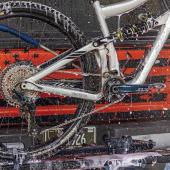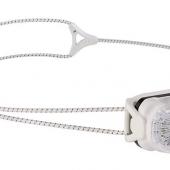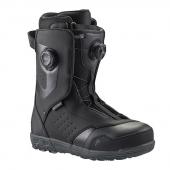Review: Kill Your Quiver
Versatile summer gear.
Every sport has its disciplines, and every discipline has its specific gear. There's cycling, but within cycling you have road biking, mountain biking, cyclocross, fatbiking, bikepacking, and so on. While any bike might get you from any point A to any point B, a surface-specific bike will probably do it best. But that sounds expensive, and there's only so much room in the garage.
Now, the same scenario can be laid out for whatever sport, which is why this summer, I've been taking sport-specific gear, and testing its versatility. Here's what I've learned.
Packs
Go to any backpack manufacturer's website and you'll encounter a long list of options. Daypacks. Hip-packs. Travel packs. Hydration packs. And so on. I primarily mountain bike in the summer, so I figured I should buy a mountain-bike pack. These days, just within the mountain-bike category, there are several hyper-specific options. I use a standard 22L daypack for all-day backcountry rides, but I needed something for shorter post-work laps. Enter the hip-pack, aka, fanny-pack. Believe it or not, the ultra-nerdy travel accessory of the mid-80s is back, and now it's ultra-hip, no pun intended.
And it makes sense. For most rides, all you need a basic repair kit, an emergency waterproof shell, and some water. All that and then some fits into the Hot Laps 5L hip-pack from Dakine. Somehow, Dakine managed to include a 2L Hydropak hydration bladder in this compact unit, giving you more than enough H20 for a two to three-hour ride, even in mid-summer. The drinking hose wraps around the waist, snapping into a plastic holster. Try as I might, I couldn't get the hose to pop loose unintentionally. When it comes time for a drink, you won't miss a pedal stroke as the hose releases with one hand and snaps back into place just as easily.
When the bladder's full, storage is at a premium, but I've loaded mine up with spare tubes, a handpump, tire levers, an extra chain link, some food, and a rain shell with no problem. Inside the pack, smaller pockets keep things organized. Added bonus: my shuttle buddies are less likely to get a me-sized sweat stain on their front seats. No backpack means less sweating and quicker drying.
While all this sounds great for the dedicated mountain biker, what if you want the convenience of a hip-pack without having to buy something so specific? Well, for that exact reason, I've been using my Hot Laps on trail runs, shorter hikes, and even fishing. When I run with my dog, I need to bring poop bags and extra Ziplocs to pack out his waste. I also need water, some food, a rain shell, and a way to carry bear spray. The five-liter pack is the perfect size, and now I don't have to add a running vest to my list of gear expenses.
If I'm heading to the Gallatin for an evening, I can throw a small fly box, some line and tippet, a can or two of beer, and a few other essentials into the pack and I'm good to go. Ditto for a short hike. While Dakine never intended to make a pack this versatile (indeed, they were designing something hyper-specific within a sport's sub-discipline), the Hot Laps is one of two packs I'll use all summer, no matter the activity. Come to think of it, it's the ideal in-bounds ski bag, too.
$70; dakine.com.
Shades
By mid-summer, the Montana sun is strong. While I'd rather bike without shades, I wear them for protection from dust, dirt, and wayward tree limbs as much as for the sun. I require high-performance sunnies, since mountain biking is a high-output activity, but I don't want to look like I just completed a Tour stage when I'm rehydrating at the trailhead. Good sunglasses are also expensive, so I want something that will serve me well 100% of the time. Enter the Rebound from Smith.
They feature polarized lenses (standard on any high-end sunglasses these days), but also include Smith's patented ChromaPop technology. If you think we've had a green spring and early summer, try seeing the mountains in ChromaPop. Truman Gulch looks like a tropical rain forest through the eyes of an unsuspecting LSD tester.
While stunning visuals are all well and good, they don't mean much unless the shades perform—and these do. The only time they fog at all is when I stop to rest; as soon as I'm moving again, any condensation build-up evaporates quickly, restoring crystal-clear vision. Rubber on the nose and temples keeps the Rebounds secure and motionless on my face, eliminating distractions on technical climbs and descents.
The dark-brown lenses are as advertised: dark. That's good for riding open hillsides and into direct sunlight, but deep in the forest or on overcast days, I find myself wishing for a slightly lighter tint. Which you can get, if you select a color combination with lighter lenses.
It should go without saying, being that Smith is as much a fishing company as a biking company, but the Rebounds are excellent on the river, helping me scope a pod of grayling on Emerald Lake through dark, overcast conditions; and they perform great during rugged trail runs, the rubber accents holding them in place no matter how rough the trail gets.
The clinching feature of these sunglasses is their looks. It shouldn't be so, but I appreciate that Smith made a product that performs so well and looks so normal. This helps soften the blow of the $170 price tag, which, these days, really isn't that high, especially for something so versatile.
$170; smithoptics.com.
Baggies
Montana's varying terrain means we get to enjoy a variety of activities, often all in one day. Bike to a lake, jump in said lake, swim around said lake, bike back to the trailhead from said lake, fish the creek running out of said lake. And that's just half the weekend. Since I edit an outdoor magazine and don't, say, trade stocks and bonds, I have to budget for days like these carefully.
Obviously, I'm unwilling to miss out on the fun, so functional pieces like the Big Eddy shorts from Kavu fill my closet. Since picking up a pair about two months ago, I've worn them skiing, fishing, swimming, canoeing, and biking. They're a water short, but they have four deep pockets and a standard zipper fly that snaps shut, plus a semi-elastic belt that buckles above the fly. They're quick-drying, and mine are covered in fish images, so they pull double duty as party shorts as well.
While $60 is more than I'd typically spend on shorts (I recently bought two pairs for $30), the Big Eddies are basically four shorts in one, meaning I can stomach the price tag, and in the end I'm saving money. Bike shorts alone as usually closer to $100, and high-end board shorts can be just as expensive.
$60; kavu.com.
So, after testing products designed with one sport in mind, I've come to the conclusion that quality products distinguish themselves through versatility. And perhaps that's how you can justify spending your hard-earned dough—look for products, such as these, that will carry their weight and then some.


